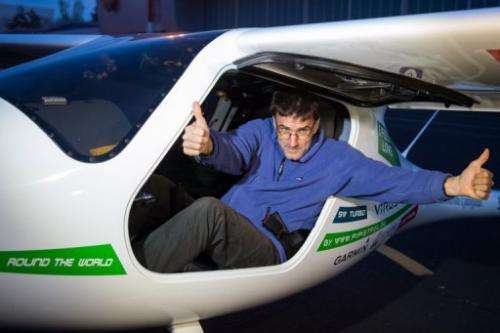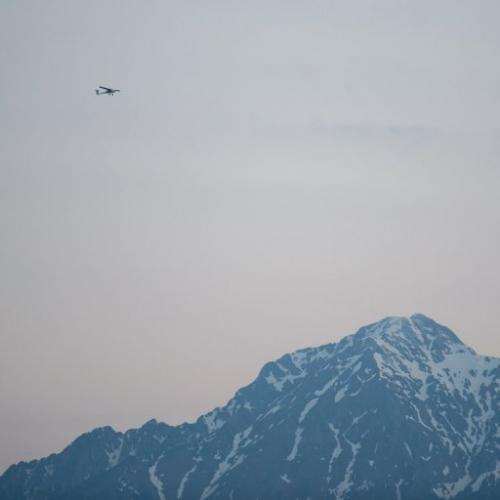Matevz Lenarcic, a Slovenian pilot, biologist and photographer-adventurer, poses at Brnik airport prior to his flight over the North Pole on April 22, 2013. Lenarcic landed on Thursday in Western France after having overflown the North Pole in an ultra-light plane equipped to measure air pollution.
Slovenian adventurer Matevz Lenarcic landed on Thursday in Western France after having overflown the North Pole in an ultra-light plane equipped to measure air pollution.
"Only yesterday (Wednesday) I flew almost 4,000 kilometres (2,485 miles), no other similar (ultra-light) plane could do this," Lenarcic told AFP shortly after landing in Saint-Nazaire's airport, western France.
He added, the stop in Saint-Nazaire was not initially planned but the weather conditions and a problem with getting the type of fuel needed for his plane in an Irish airport forced him to change the route and land in France.
"I hope to conclude this trip successfully, it's not over yet," Lenarcic said, adding he could not predict when will he make the five-hour trip back to Ljubljana due to the weather conditions.
The 54-year-old biologist, adventurer and pilot had, on April 22, started in Ljubljana his GreenLight WorldFlight-North Pole project becoming the first pilot to fly in a flyweight plane from Europe to North America via the North Pole and back.
"I've had many unexpected events, that is why this trip has extended 14 days longer than initially planned," Lenarcic said adding all pollution measurements had been carried out as planned.
Matevz Lenarcic, Slovenian pilot, biologist and photographer adventurer, flies over the mountains near Brnik airport at the beginnig of his flight over North Pole on April 22, 2013. Lenarcic landed on Thursday in Western France after having overflown the North Pole in an ultra-light plane equipped to measure air pollution.
While overflying the Arctic, an important indicator of world's weather changes, Lenarcic was surprised to notice that "temperatures on the very North Pole were much higher than in the surrounding areas."
Lenarcic, an accomplished aerial photographer, took pictures and measured levels of black carbon and light absorbing particles over the Arctic at a height of 3,000-4,000 metres (9,800-13,000 feet), an altitude rarely explored by scientists.
These particles—mostly the product of burning coal and other fossil fuels—absorb light from the Sun and thus play a role in the complex equation of global warming.
The 15,600-kilometre (9,700-mile) scheme was initiated last year after Lenarcic, 54, succeeded in circling the world in the same aircraft, a Pipistrel Virus SW914, which weighs just 290 kilogrammes (640 pounds) unladen.
© 2013 AFP
























